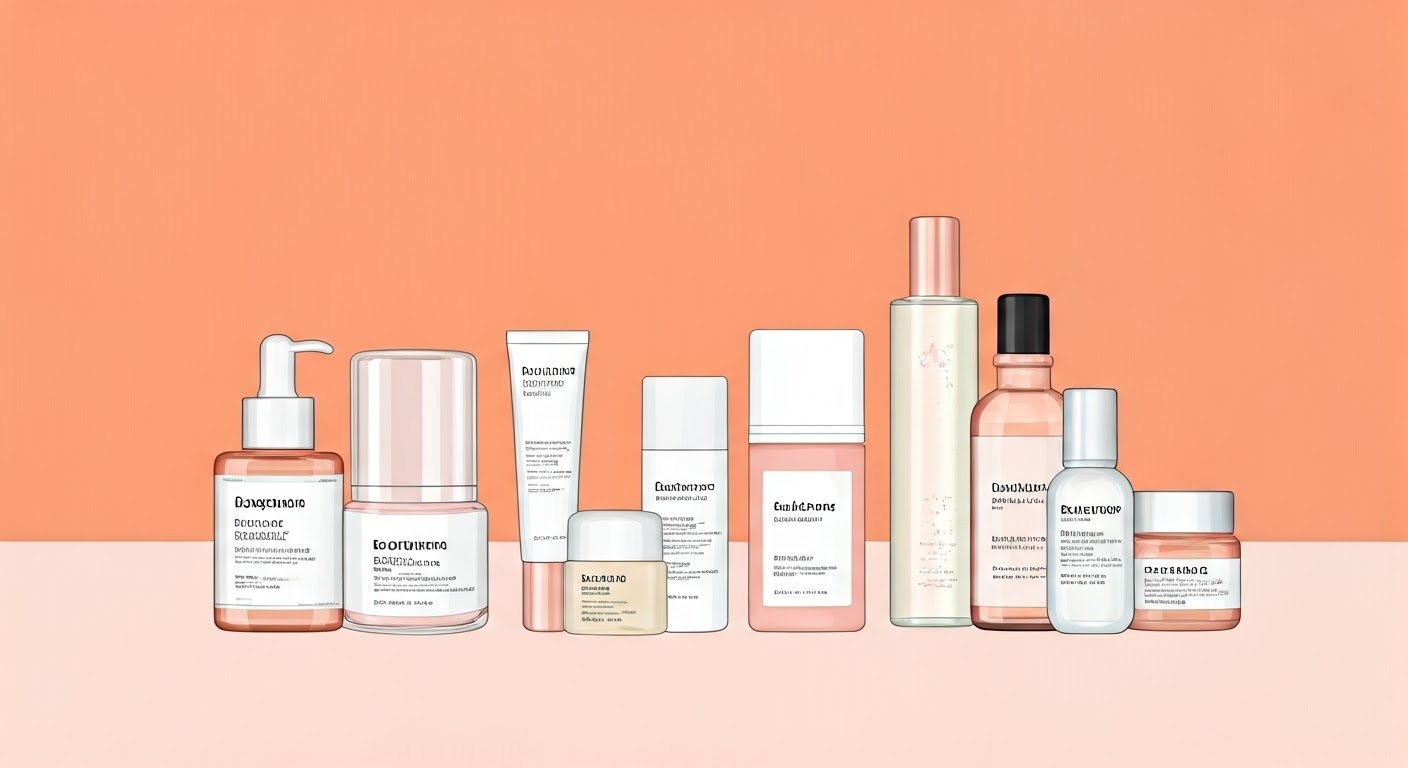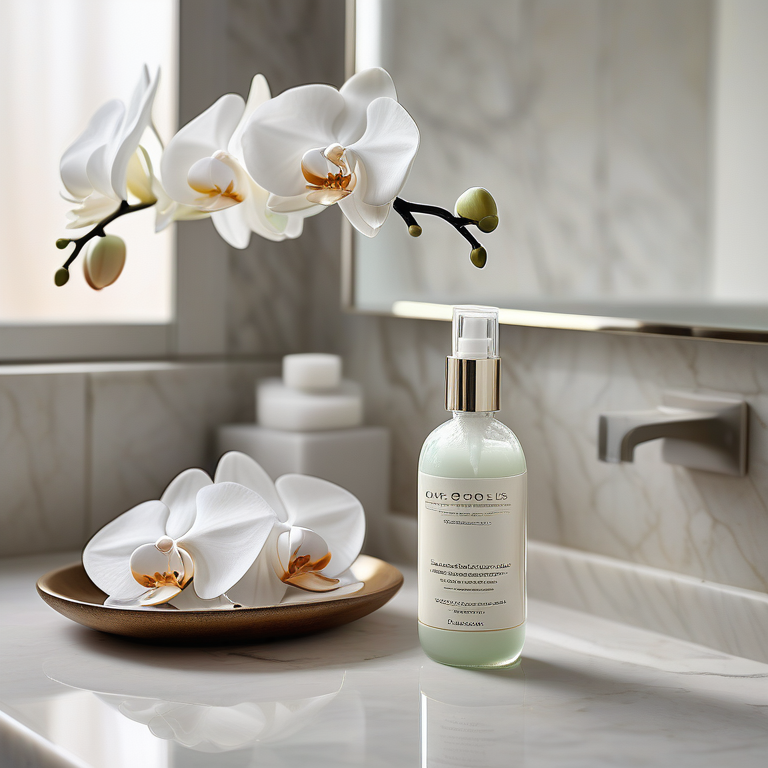Key Differences: Chemical Peel versus Microdermabrasion


Key Highlights
- Chemical peels use chemical solutions to exfoliate the skin, while microdermabrasion utilizes a physical exfoliation method.
- Both treatments effectively address various skin concerns, including acne scars, uneven skin tone, fine lines, and sun damage.
- Chemical peels offer deeper exfoliation, with options for light, medium, and deep peels, while microdermabrasion primarily targets the outer layer of skin.
- Recovery time varies, with chemical peels generally requiring a longer downtime depending on the peel depth.
- Consulting a dermatologist is crucial for determining the most appropriate treatment based on an individual's skin type and desired outcomes.
Introduction
As we get older, our skin does not shed dead skin cells as quickly. This can cause a buildup of skin cells, which makes our skin look dull. It can also lead to fine lines and uneven texture. Chemical exfoliation treatments, like chemical peels and microdermabrasion, can help. These treatments remove dead skin cells and reveal brighter and smoother skin. Let’s look at the differences between these popular treatments to find the best one for your skincare needs and achieve better results.
What Are Chemical Peels?

Chemical peels are very popular today. They are a strong option for dealing with common skin problems. These peels are especially good at reducing fine lines and wrinkles.
In addition to fighting signs of aging, chemical peels also help with acne scars and dark spots from the sun. They can be used on different parts of the body, like the face, neck, chest, and hands. This makes them a great choice for people who want overall skin rejuvenation.
The Basics of Chemical Peel Treatments
Chemical peel treatments use a special chemical solution on the skin. This solution breaks the bonds holding dead skin cells together. As a result, the outer layers of skin peel away, revealing fresh, new skin underneath. There are different types of chemical peels, and they vary in strength and how deep they go. One type of chemical peel is the superficial or light peel, which uses mild acids to treat lower-level skin discoloration.
Superficial peels, or light chemical peels, usually contain mild acids like glycolic acid or salicylic acid. These peels focus on the very top layer of the skin. They help improve skin tone and texture, making them great for treating mild issues like fine lines, slight discoloration, and acne.
Medium-depth peels go deeper into the skin. They target the middle layers to help with more serious problems like deep wrinkles, acne scars, and age spots. Trichloroacetic acid (TCA) is a common acid used in these peels. They effectively reduce sun damage and help create a more even skin tone.
Various Types of Chemical Peels and Their Benefits
The world of chemical peels has different types to help with various skin issues:
- Superficial Peels: These peels use ingredients like glycolic acid or salicylic acid. They gently remove the top layer of skin. They are good for mild issues like fine lines, acne, and light brown spots.
- Medium Peels: These peels contain trichloroacetic acid (TCA). They go deeper into the skin. They work on clear wrinkles, acne scars, and uneven skin tone.
- Deep Peels: These are the strongest type of peel and use phenol. They go deep into the skin’s layers. They are meant for serious problems like severe sun damage, deep wrinkles, and major scars. Because they are very intense, they need a longer healing time.
What is Microdermabrasion?
What is microdermabrasion? Microdermabrasion is a non-invasive skincare procedure that uses a handheld device to exfoliate and remove the top layer of dead skin cells, revealing smoother and brighter skin underneath. Unlike chemical peels that use acids to exfoliate, microdermabrasion uses a diamond-tipped wand or fine crystals to gently sand away the outer layer of skin.
How microdermabrasion works and its advantages? This treatment is great for improving skin texture, reducing the appearance of fine lines and wrinkles, minimizing pore size, and addressing mild pigmentation issues. It is a more gentle option compared to medium or deep chemical peels and requires little to no downtime.
How Does Microdermabrasion Work and Are there Any Advantages?
Microdermabrasion is a non-invasive skincare treatment that uses a diamond-tipped wand or fine crystals to gently exfoliate the skin, resulting in a smoother complexion. It improves skin texture, reduces fine lines and wrinkles, shrinks pores, and addresses mild pigmentation issues. This procedure stimulates collagen production, enhancing skin elasticity over time. By promoting cell turnover, it allows skincare products to penetrate the skin more effectively. Regular microdermabrasion sessions can lead to an even skin tone and a rejuvenated appearance. Consult a skincare professional to determine if this treatment is right for you.
Comparing the Procedures: Chemical Peel vs Microderm

Chemical peels and microdermabrasion are two different ways to refresh your skin. Each has its own benefits:
- Chemical Peels: These use special chemical solutions to remove layers of skin. They can help with many skin issues, from mild bumps to deep wrinkles. However, after a deeper peel, it may take longer for your skin to heal.
- Microdermabrasion: This is a gentler method. It physically removes dead skin cells, making it a good choice for people who want a quick fix. It takes less time for recovery. Though it works well for light skin problems, it may not be strong enough for deep wrinkles or serious skin damage.
Effectiveness for Different Skin Types
When picking between a chemical peel and microdermabrasion, think about your skin type, personal needs, and what you want to achieve.
- Chemical Peels: Chemical peels work differently for each skin type and depends on how strong the peel is. Lighter peels are often good for most skin types, even for sensitive skin. However, deeper peels may not be a good choice for people with darker skin tones because they might cause darker or lighter spots.
- Microdermabrasion: Microdermabrasion is safe for most skin types. It is a gentler option. This is especially good for those with sensitive skin who may not be the best candidates for chemical peels.
Talking to a board-certified dermatologist is important. They can help you find the best treatment based on your skin concerns and skin type.
Recovery Time and Side Effects

Understanding side effects and recovery time is important when thinking about any cosmetic procedure.
- Chemical Peels: The recovery time for chemical peels varies based on how deep the peel is. Superficial peels usually have little downtime. There may be some mild redness and flaking that go away in a few days. But deeper peels need more time to recover, often one to two weeks. They can cause side effects like redness, swelling, crusting, and peeling.
- Microdermabrasion: Microdermabrasion is a gentler procedure that has minimal downtime. Patients may see temporary redness and feel a sunburn-like sensation. There might be mild dryness, but these effects usually fade within a few hours.
Both procedures are safe when done by a qualified professional. It is important to talk about any concerns or risks with your dermatologist or esthetician.
Complementary Skin Care Products
Good skincare is very important to keep the results of chemical peels and microdermabrasion.
Following these treatments, your skin's ability to absorb skincare products is enhanced, allowing for better efficacy of moisturizers, serums, and sunscreens tailored to your skin type. This optimized absorption can lead to improved results and contribute to maintaining healthy skin in the long term.
It's important to choose skincare products formulated for your unique skin type and concerns to maximize their benefits. Consulting with a skincare specialist can help you determine the most suitable products for your individual needs. By investing in high-quality skincare products and following a personalized regimen, you can promote overall skin health and achieve optimal results.
Best Practices for Chemical Peel Aftercare
After a chemical peel, it's very important to take care of your skin for better healing and longer-lasting effects:
- Protection: Keep your new skin safe from the sun. Make sure to use broad-spectrum sunscreen with at least SPF 30 every day. This will help prevent skin darkening and keep the results of your chemical peel.
- Hydration: Chemical peels can make your skin dry. To help with this, keep your skin moisturized by using a mild, fragrance-free lotion. Drink a lot of water throughout the day to stay hydrated too.
- Avoid Picking or Scratching: You might notice your skin peeling or flaking as it heals. This is normal. However, you should not pick, scratch, or rub the area, because this can slow down healing and make scarring or infections more likely.
Recommended Products Post-Microdermabrasion
Microdermabrasion is usually milder than chemical peels. You can boost skin rejuvenation and keep your results longer by adding certain skincare products to your routine after treatment:
- Gentle Cleanser: Choose a soft, non-irritating cleanser. This will clean your skin without taking away its natural oils. It’s very important after microdermabrasion because your skin has been exfoliated and can easily become dry.
- Hydrating Serum: Use a hydrating serum that has hyaluronic acid. Hyaluronic acid helps attract moisture from the air into your skin. This keeps your skin plump, hydrated, and soft.
- Sunscreen: After microdermabrasion, sun protection is key. Use a broad-spectrum sunscreen with an SPF of 30 or higher every day. This is important even when it’s cloudy, to keep your skin safe from harmful UV rays.
Conclusion
In conclusion, it is important to know the differences between chemical peels and microdermabrasion. This knowledge helps you make better choices about your skin care treatments. Chemical peels go deeper into the skin and give more noticeable results. On the other hand, microdermabrasion is a gentler way to exfoliate and is good for many skin types. Think about your skin goals, how sensitive your skin is, and how much recovery time you want when picking one of these treatments. Always remember to take good care of your skin afterward and use the right products to keep it healthy and glowing. It is a good idea to get professional help to make sure you get the best results for your skin.
Frequently Asked Questions
Which Treatment is Right for My Skin Type?
The best treatment for your skin depends on your type and what issues you have. For example, if you have active acne, a salicylic acid peel could help. On the other hand, for fine lines, brown spots, or uneven skin texture, microdermabrasion or a certain type of peel might work well.
Can I Use Makeup After My Treatment?
It's a good idea to stay away from makeup for a few hours after treatment. Your skin might feel sensitive. When the tingling sensation goes away and your new skin begins to show, you can slowly start using makeup again. Choose gentle products that will not clog your pores during this recovery time.




